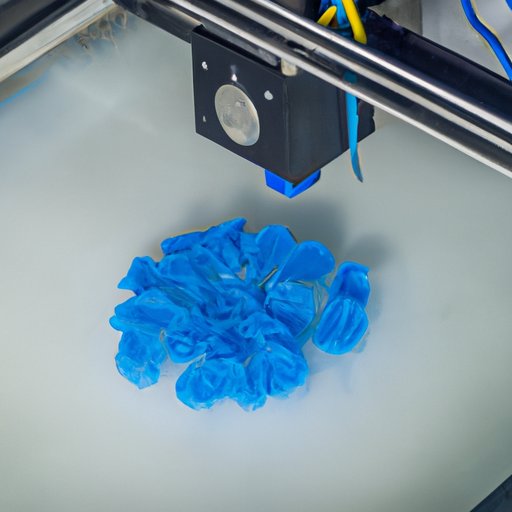I. Introduction
Have you ever wondered what constitutes the materials surrounding you? The steering wheel of your car, your water bottle, the soles of your shoes – they’re all made of polymers. Polymer is a material that is used ubiquitously in our daily lives. Understanding its chemistry, properties, and applications is integral to comprehending the ways in which it functions in our world.
II. The Beginner’s Guide to Polymer: Understanding What It Is and Why It Matters
Polymers can be a confusing subject, but put simply, they are large molecules consisting of repeating subunits known as monomers. These subunits build long chains, and the resulting compound can either be naturally occurring or synthetic. Synthetic polymers are commonly used in products such as plastics, synthetic fabrics, and adhesives. Meanwhile, natural polymers like starch, silk, and DNA, are present in living organisms.
The use of polymers impacts our daily lives in numerous ways. Polymers have properties that vary depending on their chemical composition and are designed to have specific physical, chemical, and biological properties. For example, polymer affects the durability, elasticity, and permeability of materials.
III. Exploring the Chemistry of Polymers: Everything You Need to Know
Polymers are made up of monomers, which consist of carbon, hydrogen, oxygen, and sometimes nitrogen atoms. It is the specific arrangement of these atoms that define the properties of the polymer. The monomers bond together to form long chains, which are called ‘polymers’. There are two types of polymers: homopolymers and copolymers.
Chemical properties like molecular weight, branching, cross-linking, and crystallinity can alter a polymer’s physical properties. Molecular weight, in particular, influences the polymer’s mechanical strength and impacts how the polymer behaves when subjected to heat or cold temperatures.
IV. From Plastics to DNA: The Many Applications of Polymers
From water bottles to prosthetics, polymer materials have become one of the most widely used materials in various industries. Polymer-based materials can be designed to have specific molecular structures to make them easily moldable, durable, water-resistant, and lightweight.
One field in which polymer is crucial is medicine. In fact, the majority of medical implants are made from polymers. They are biocompatible and can be designed to safely degrade in the body over time. Polymer-based medical tools, including gloves, syringes, and tubing, have revolutionized modern medicine.
Polymers also have critical roles in biotechnology. DNA, for example, is a natural polymer and serves as the genetic material of living things. The naturally occurring polymer, silk, is used in cosmetics, medicine, and bioplastics.
V. How Polymers are Changing the Way We Live and Work
Innovations in polymer technology have led to the development of new materials to serve various applications. Inheritance technology uses polymers to improve the quality of crops and breed disease-resistant varieties. Meanwhile, nanotechnology employs polymers to manufacture ultra-thin coatings with unprecedented properties.
The advancement of 3D printing, in which materials, including polymers, are used as a biodegradable filament in the printer, has led to new possibilities in various industries. 3D printed products are becoming increasingly accessible and affordable, altering how products are conceptualized and designed across the manufacturing industry.
VI. Breaking Down the Science of Polymers: A Comprehensive Overview
As the importance of the polymer has grown, so has the research into its properties and applications. Polymers can exist in a range of different structures, including amorphous, semi-crystalline, and crystalline structures. The properties of different types of polymers can vary massively, from rubbery and ductile to glassy and fragile.
Scientists today are working towards understanding how to design and synthesize new materials that can exhibit specific properties and improve already existing materials. In addition, new techniques for processing, manufacturing, and recycling polymers are being developed. Polymers are set to play an essential role in the future of materials development and manufacturing.
VII. Conclusion
In conclusion, polymers are an essential part of modern life and are used in numerous ways. By understanding how they are made, their properties, and how they are used, we can appreciate their importance and recognize opportunities for innovation and development. As scientists continually unravel the secrets of polymer science, it’s exciting to imagine the yet-to-be-discovered possibilities for our future.
